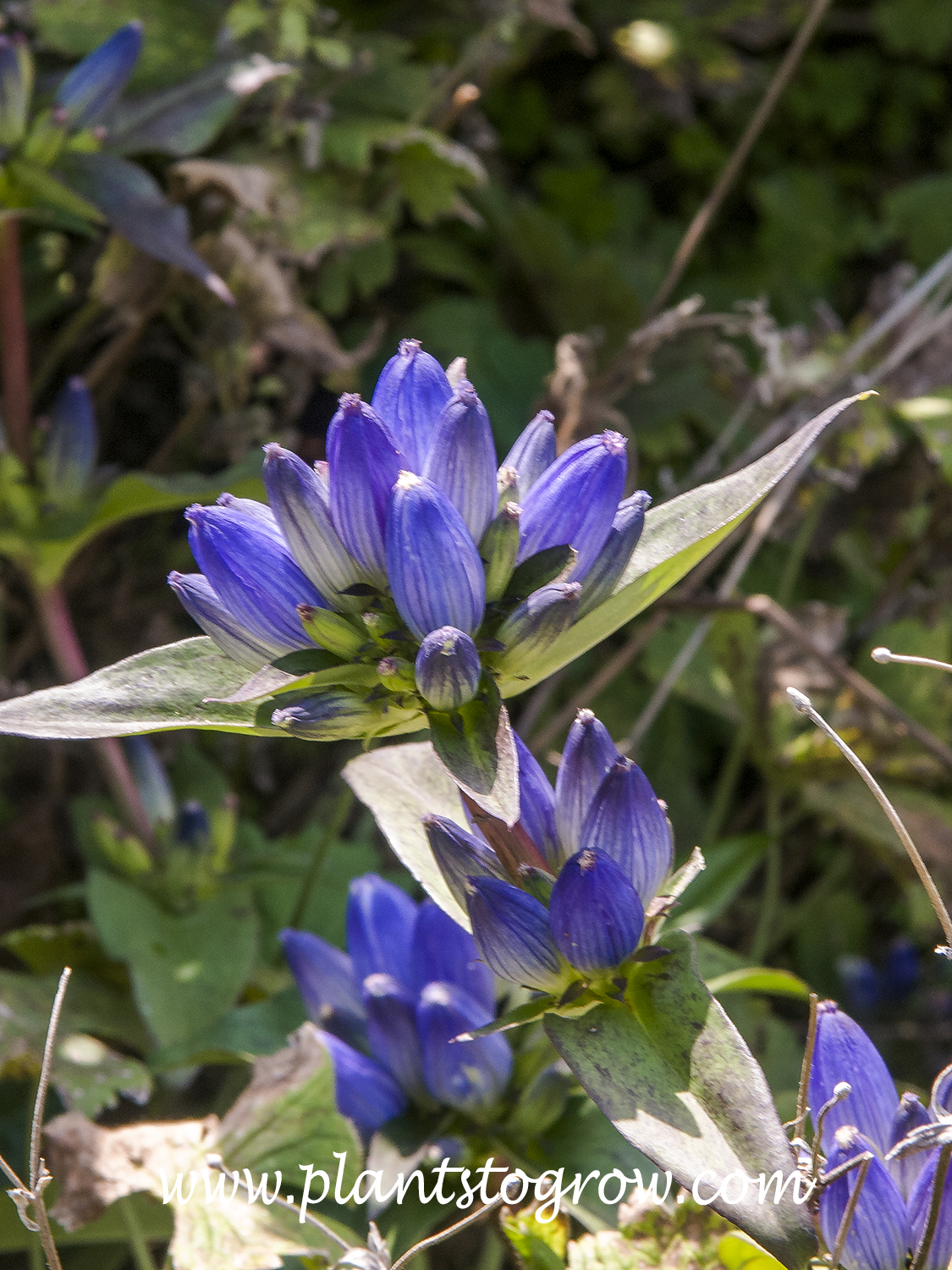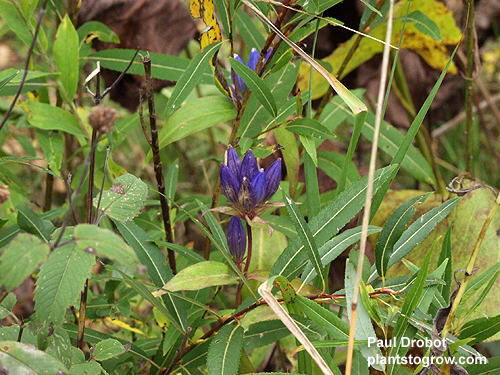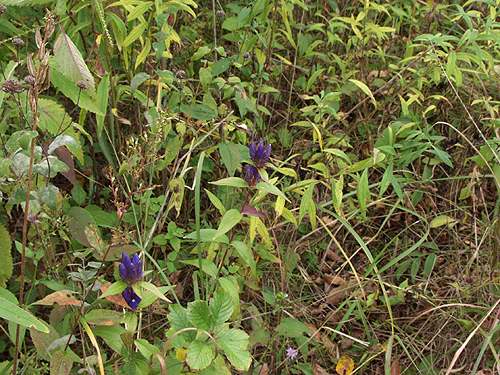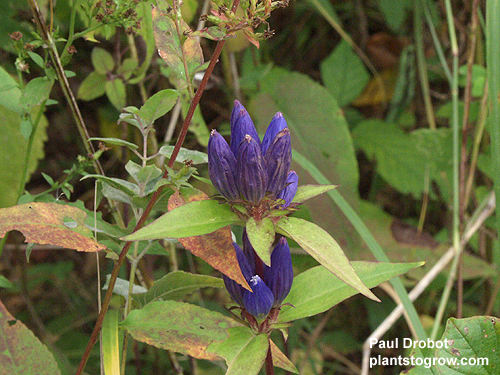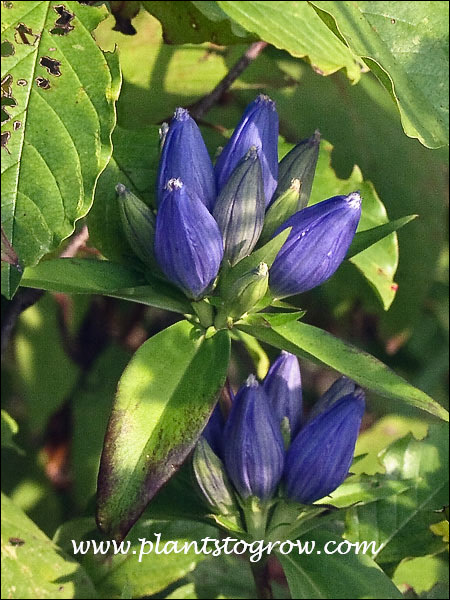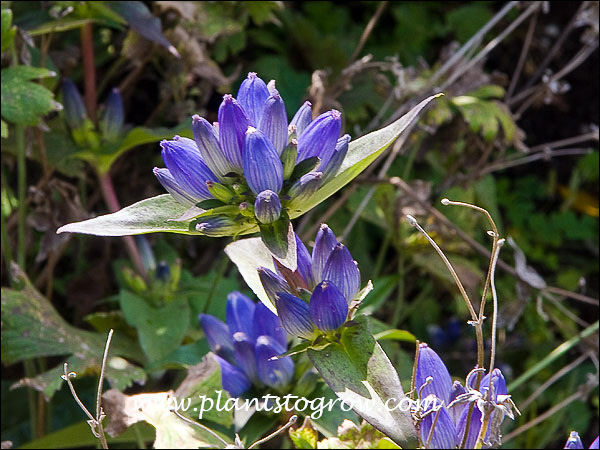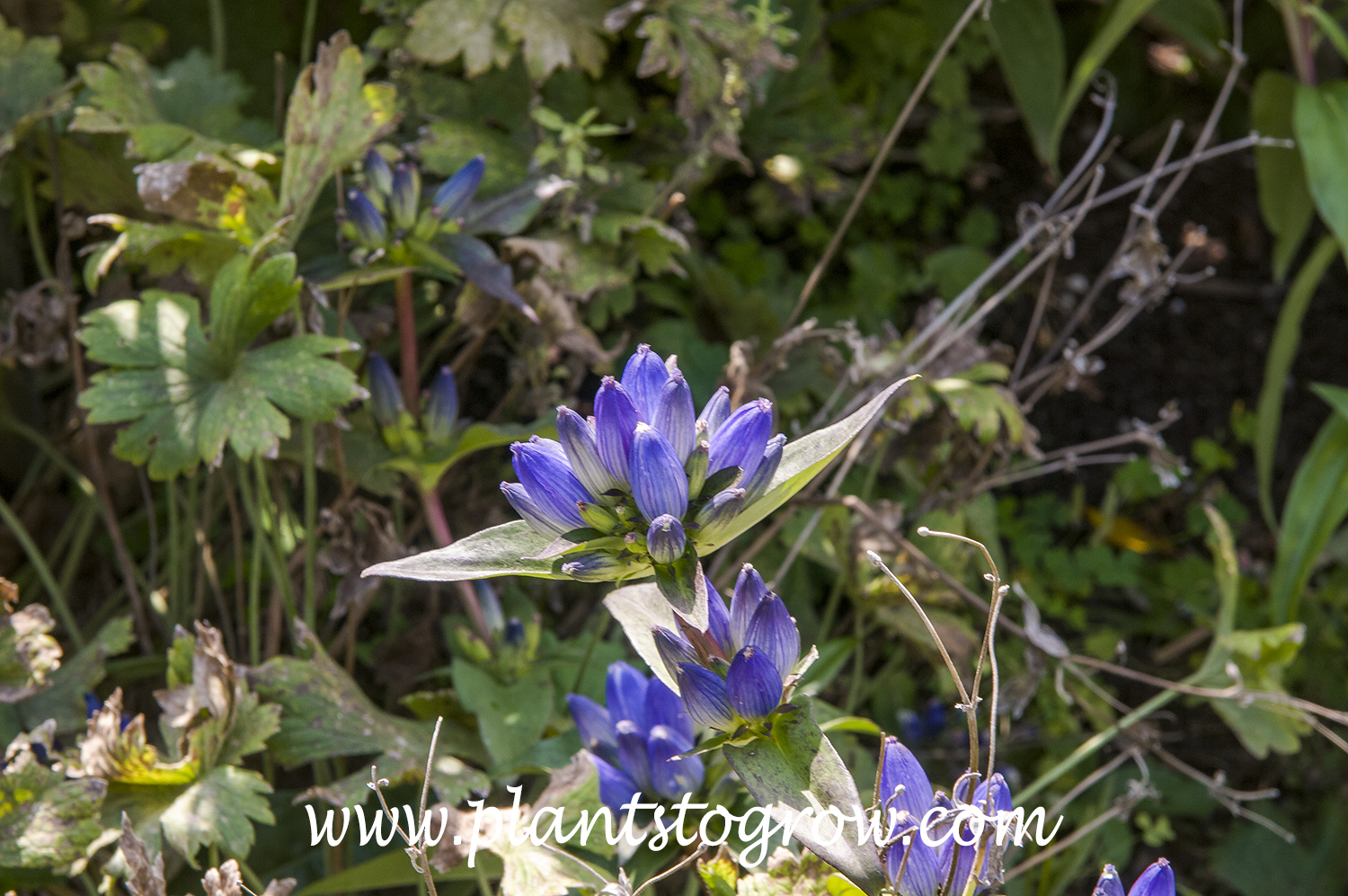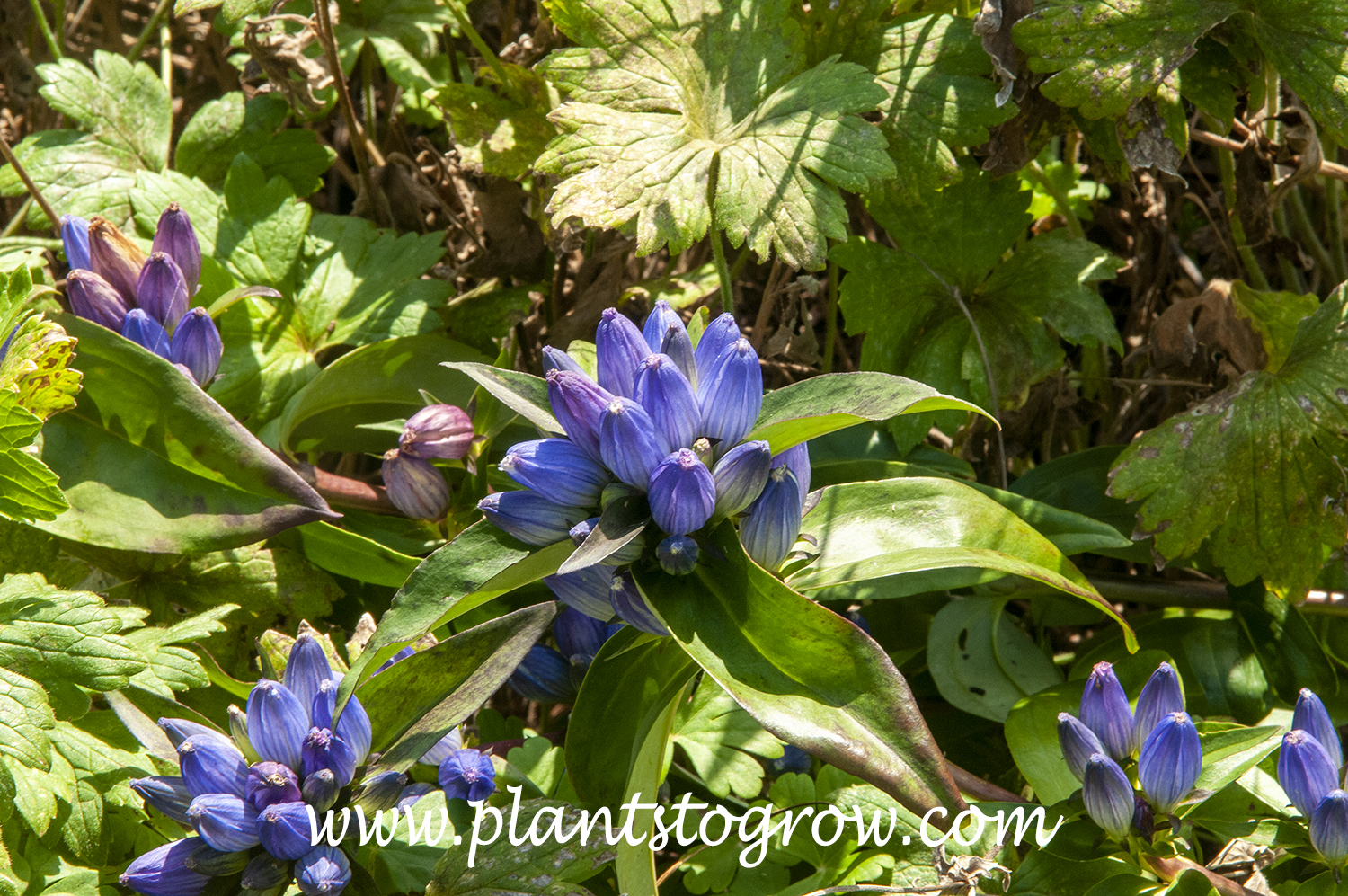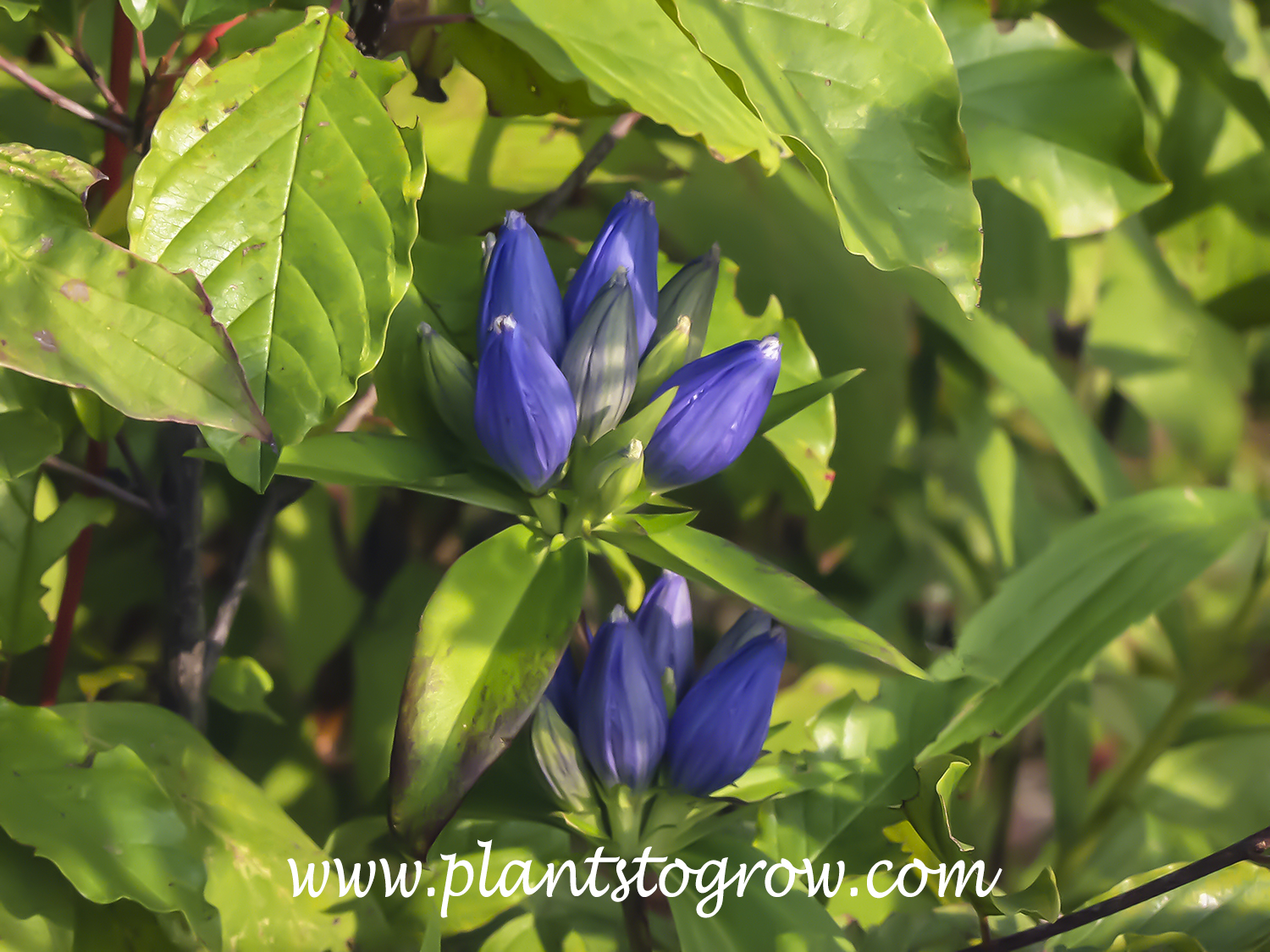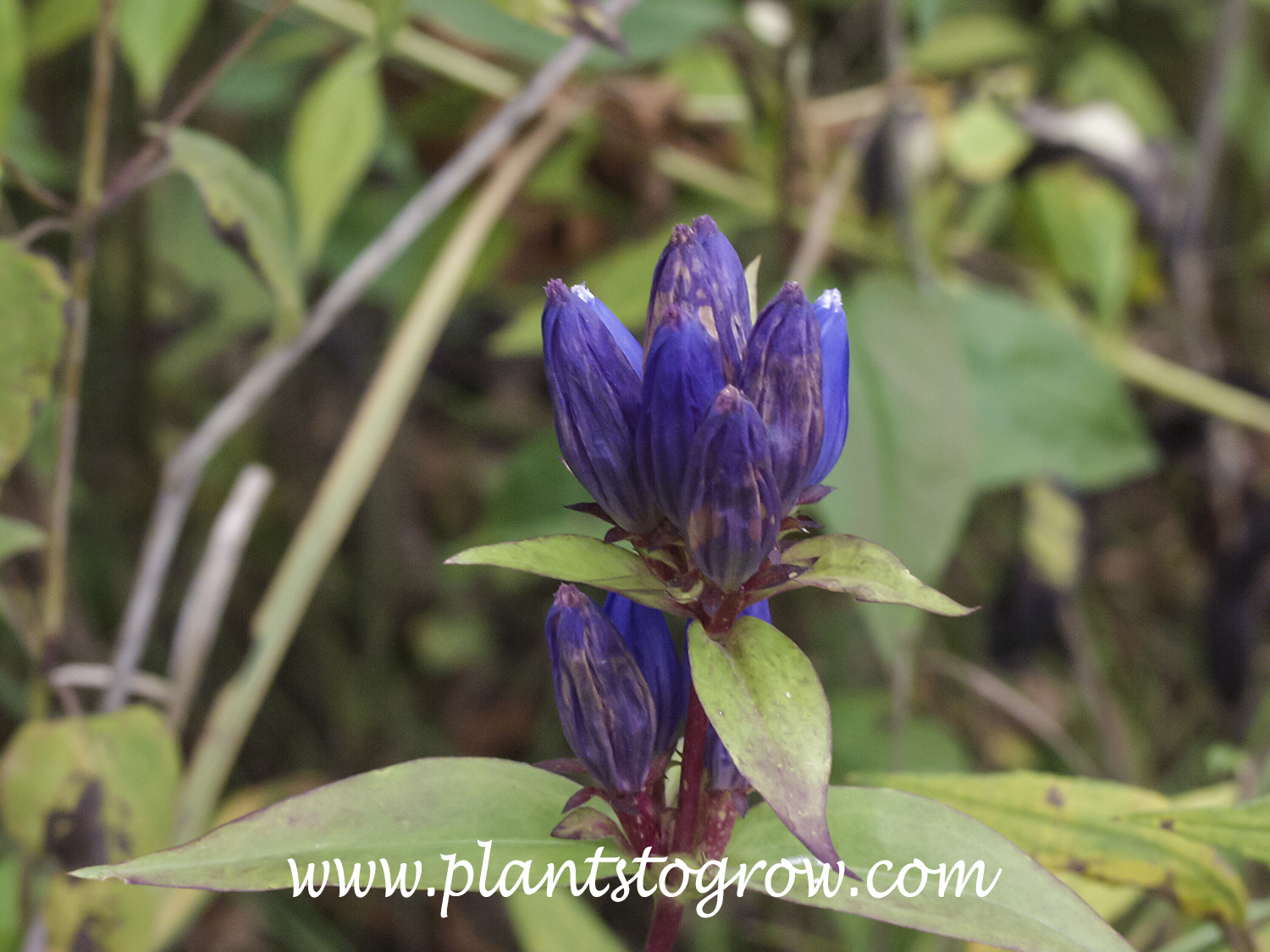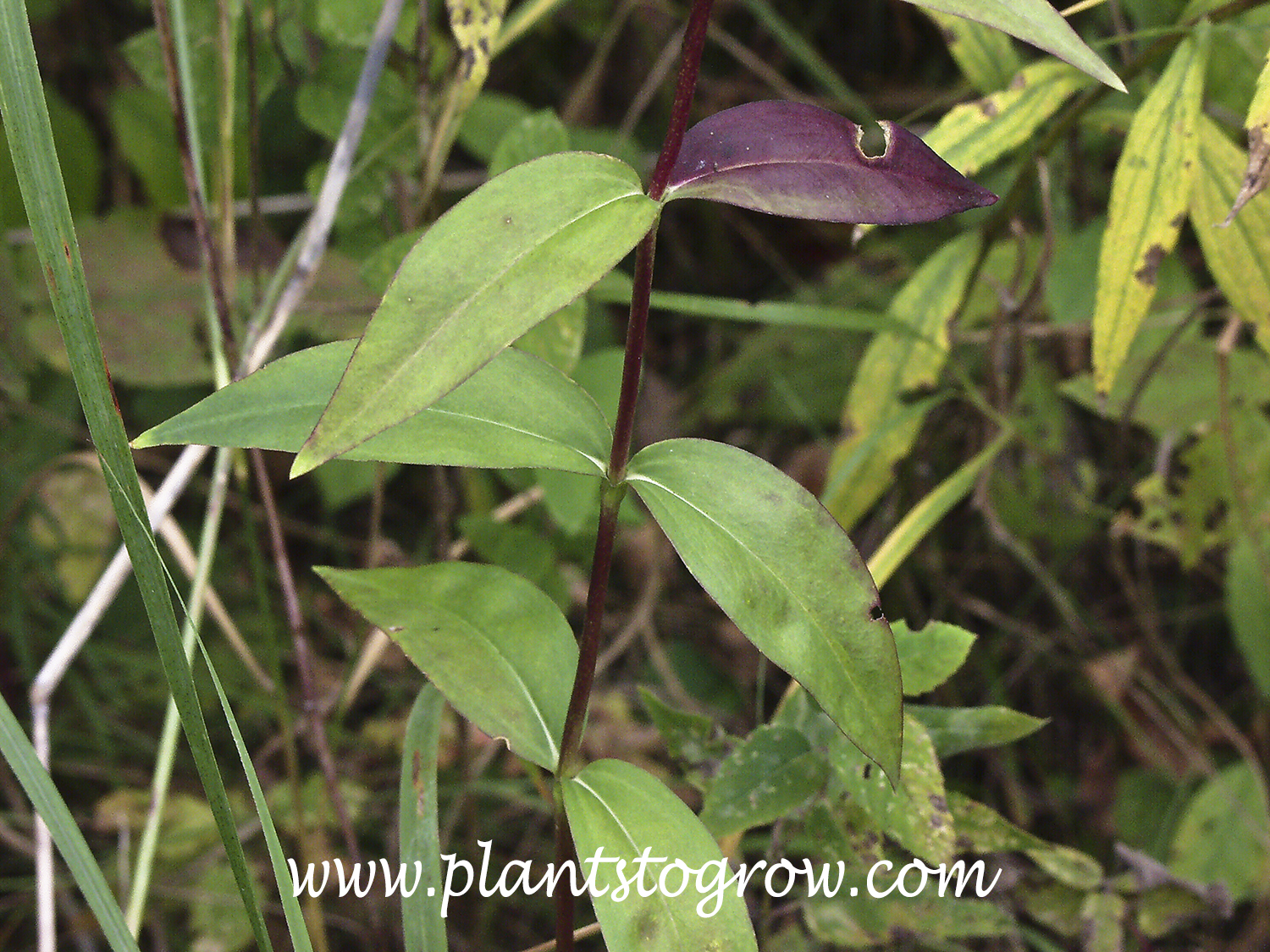| Description | Closed Gentian (Gentiana andrewsii) One of the easier Gentians to grow. This wildflower grows in moist, part-shade sites. The blue flowers look like flower buds and do not open. |
|---|---|
| Pronunciation | (jen-shee-AN-uh)((an-DROO-see-eye |
| Plant Type | Wild Flowers |
| Hardiness Zone | 5 |
| Sunlight | part shade |
| Moisture | moist |
| Soil & Site | Found growing in mesic to moist prairies, seepage areas, and fens. Likes slightly acid, humus soils. |
| Flowers | The deep blue flowers are found in clusters at the tops of the stems and are surrounded by a whorl of leaves. They are stalkless, remain closed, and bloom throughout September into mid-October. They are pollinated by bees. The petals are fused, which is called sympetalous. |
| Fruit | fused petals become a papery wrapping for a 1-inch capsule, seeds wrapped in papery wing |
| Leaves | stalk less, 5" long and about 1.5" wide, pointed and the upper leaves are usually the largest |
| Stems | stems unbranched, decumbent |
| Roots | stout taproot |
| Dimensions | 2.5' tall, forms colonies |
| Propagation | Moist stratified seeds that take two years to produce strong transplants or division of older plants |
| Native Site | Native to the North East quarter of the United States into Canada |
| Cultivar Origin | The species name honors Henry Andrews, a 19th century artist. |
| Misc Facts | The roots have been used medicinally and to flavor beverages. Native Americans made compresses from the roots to heal aching backs. The genus is named after King Gentius of Illyria (550 BC) who was reputed to have discovered the medicinal uses of the roots. |
| Notes & Reference | #09-The Prairie Garden (J. Robert Smith with Beatrice Smith), #45-Prairie Propagation Handbook (Harold Rock), #56-Tall Grass Prairie Wildflowers (Doug Ladd), #191-Minnesota Wildflowers (www.minnesotawildflowers.info) |

Cart
